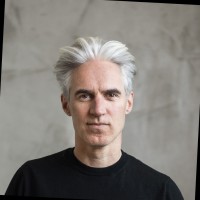Let us guess: it’s almost Q3-25, and much like any quarter before it, you are under pressure to drive efficiency.
In our current era of AIs, LLMs, RPAs, and many other efficiency-flavored acronyms, getting to this efficient state looks a lot like automating roles, slashing headcount, and delivering 10x more with 15x less...
...but what about the other E in the equation, ‘effectiveness’? A leaner org and lower costs look good on paper, but if the team’s prioritizing the wrong work or performance drops, long-term success is on the line.
True operational efficiency isn’t about doing more with less. It doesn’t always require drastic changes, either: it can come from making smarter, more effective decisions about how work is allocated and teams are structured.
Know who’s available before you outsource
As teams grow, visibility shrinks. That’s often when efficiency problems creep in: not from lack of effort, but from lack of context.
During his agency days, Float’s CEO Glenn Rogers would occasionally hire freelancers, only to later find out there were team members with the same skills available in another office. When he tells the story, he recalls how “projects would get crushed in margins and day rates, and lose profitability.”
That’s partly why he built Float: so teams like his previous one would have a go-to place to see all their resources, in real time, and use this visibility to make effective, profitable resourcing decisions. Our finance and estimates features can make a big difference here!
How other teams do it → centralizing key resourcing data isn’t just a good idea—it’s the unlock for more effective, efficient decision-making. That’s exactly what happened at Instrument, a 300+ person agency, when the team realized their spreadsheet system couldn’t keep up with their growing project volume.
They needed a single, shared view of availability to manage work across departments. After switching to Float, producers began each staffing request by reviewing the Schedule view, checking not just who’s free but also who’s tentatively booked on other projects. That extra visibility helped the team rebalance workloads in real time—avoiding over-hiring, reducing underutilization, and bringing clarity to every staffing conversation.
Scholz and Friends, a 1,300-person agency, follows a similar approach. Their resource managers check Float daily to see who’s available internally across their multiple offices before turning to freelancers. They use the same Schedule view to align internal availability with client demands, ensuring talent is used effectively before bringing in outside help.

Assign people based on chemistry, not just availability
When building teams, look beyond vacant slots on the schedule: consider how people’s skills, working styles, and personalities complement and enhance each other.
According to Rogers, “one thing that is underrated in any org’s productivity is understanding who works best with whom. You can unlock productivity by putting the right people together on a project team.”
Start by observing “the rhythm and rhyme” of how collaboration happens naturally: who energizes each other, who communicates with ease, and where complementary strengths create momentum. Here is a short clip from Rogers discussing his approach:

How other teams do it → at Instrument, CEO Laurel Burton suggests looking for “an alignment in drive, hunger, and ambition, while including diverse experiences and perspectives.”
Direct managers are trained to understand and cultivate their employees’ interests and growth areas, and share this information with vertical leads to make effective resourcing decisions with team chemistry in mind.
Prioritize talent density over headcount
A large team doesn’t always equal high impact. Rather than scaling generalist headcount, consider creating smaller teams of highly specialized talent, following the concept of talent density pioneered by Netflix.
It’s a shift professional service teams are already making. From conversations with many of Float’s 4500+ customers, Rogers understands that “teams are not growing [headcount] at the scale we saw back in 2021. They’re focusing more on a high-talent density.” Smaller teams with concentrated expertise can reduce both communication friction and overhead, making the business more efficient while delivering quality client work.
How other teams do it → Instrument is structured around three teams of vertical expertise—marketing, product, and design—that serve different client needs. This specialization helps staffing leads assign the right people to the work they’re both highly skilled at and energized by.
The long game of operational success
Operational efficiency doesn’t have to come at the expense of your people or your client work. You can reduce costs and minimize waste while protecting your team’s health, improving morale, and delivering client work successfully.
Start by putting a few of these ideas into practice now. The payoff will echo long after Q3-25 ends.
We couldn’t have written this without:










-min.png)




